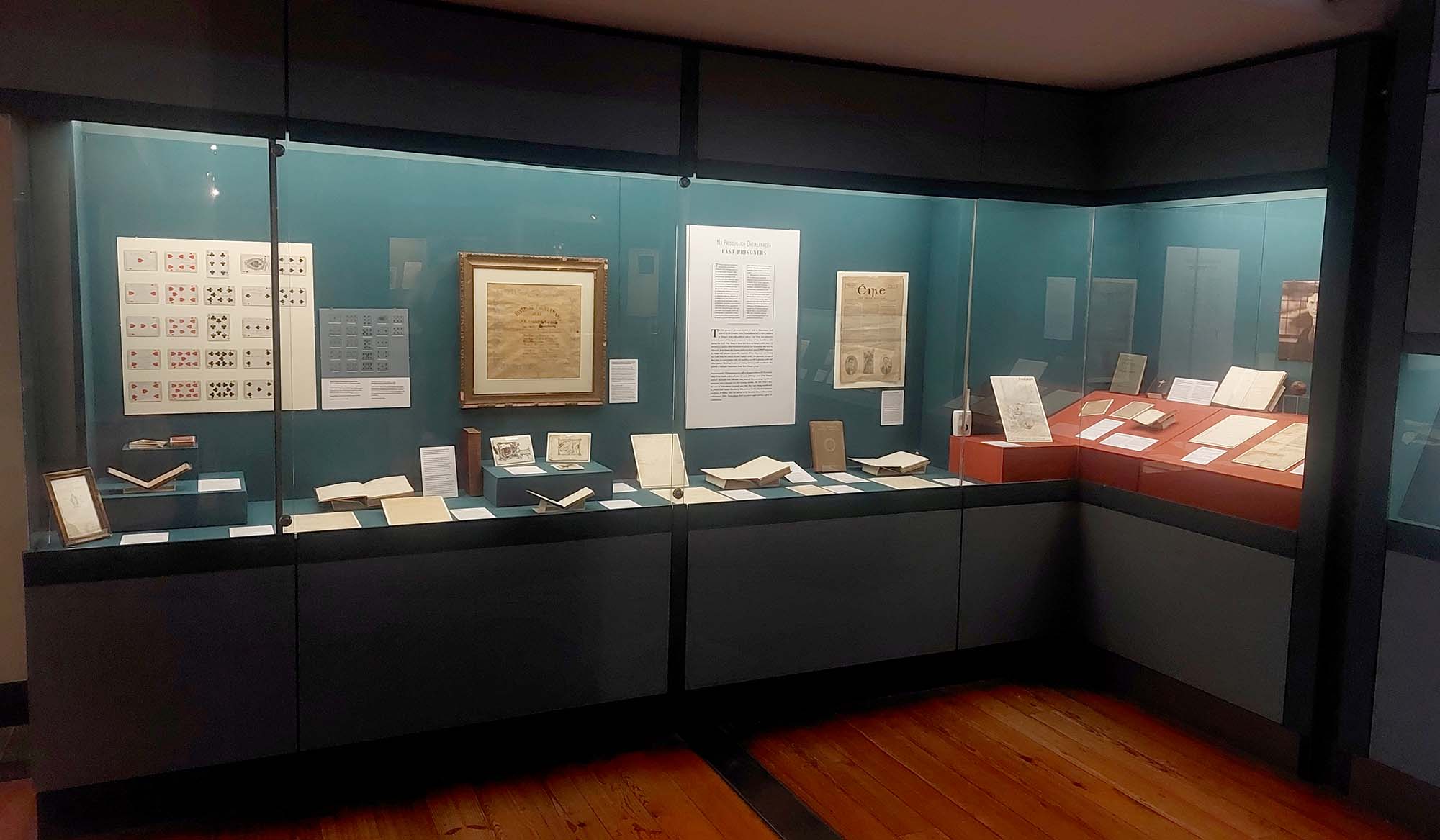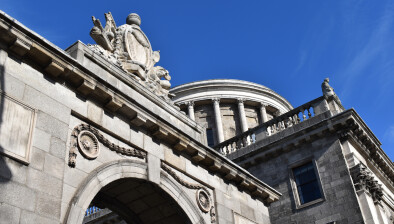Kilmainham Gaol Museum marks centenary of last prisoners

A new display at Kilmainham Gaol Museum marks 100 years since the last prisoners were held in Kilmainham Gaol.
The final prisoners, held from October 1923 to January 1924, included some of the most prominent leaders of the republican side during the Civil War, including Ernie O’Malley, Austin Stack and Peadar O’Donnell, who were one week into a 41-day hunger strike on arriving at Kilmainham.
Towards the end of the month another high-profile prisoner, Éamon de Valera, was also transferred to Kilmainham — though he was kept in strict isolation from the other prisoners and was the only occupant of the entire west wing of the gaol.
The display by the Office for Public Works (OPW) features some of the most remarkable items in the Kilmainham Gaol Museum collection, including a set of playing cards signed by 22 of the striking prisoners between 6 and 8 November 1923.
Another poignant item relating to this hunger strike is Peadar O’Donnell’s handwritten will which he wrote on 16 October, two days after the hunger strike started. It ended just over a month before Christmas.
The exhibit includes a souvenir decorative scroll signed by 24 of the prisoners who sat down to Christmas dinner in the east wing of the gaol which was decked with festive boughs of holly and pine.
Several items on display have never been on public exhibition before, including a two-volume biography of the 17th century Dutch revolutionary Johan van Oldenbarnevelt which belonged to Austin Stack.
It is thought that he had loaned it to Ernie O’Malley who later recalled how reading it in prison allowed him to escape into his imagination where, among other things, he “followed the Dutch people in their stubbornly heroic wars”.
O’Malley was a voracious reader and the exhibits include a letter he wrote to a republican named Kay Brady who was in New York at the time. In it he asked her to send him books on art and literature, including works by Chaucer, Shakespeare and Wordsworth. The letter is being shown alongside a two-volume set of the collected works of the poet Francis Thompson which he also read in prison.
One of most surprising items on display is a biography of Lord Shaftesbury owned by the republican David Robinson which came to light earlier this year in a bookshop run by the National Trust in Belton House, Lincolnshire.
David Robinson had fought the First World War and was highly decorated for his bravery. However he became involved in the Irish independence movement and was arrested with his friend Erskine Childers in November 1922.
What makes this book particularly remarkable is that it was sent to him by Lady Astor, the first female MP to take her seat in Westminster and a staunch member of the Conservative Party. The book has now been presented to Kilmainham Gaol Museum by Belton House and the National Trust.
Alone in the west wing of the gaol, it seems that de Valera occupied some of his time playing handball with the prison governor, William Corri. The balls they played with sometimes flew over the walls of the gaol, where they were collected by the Flewett family who lived next door. The family later donated them to the Museum.
De Valera was transferred to Arbour Hill early in January 1924. Almost all of the other prisoners appear to have been moved around this time also.
O’Malley was left behind due to the poor state of his health at that time, and he wrote in a letter on 11 January 1924 that he was the only prisoner left in Kilmainham. He was moved to St. Bricin’s Military Hospital shortly after that, making him the last ever prisoner to be held in Kilmainham Gaol.








